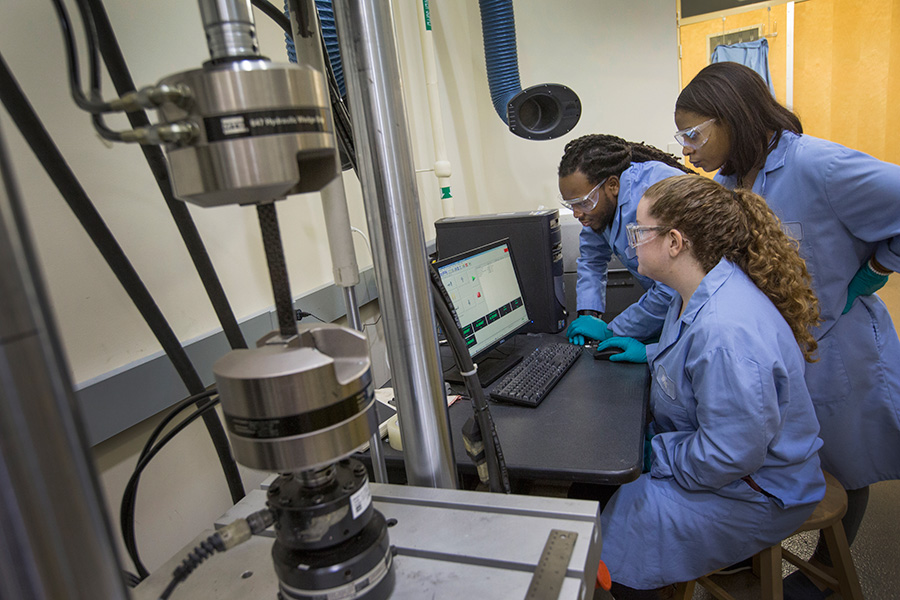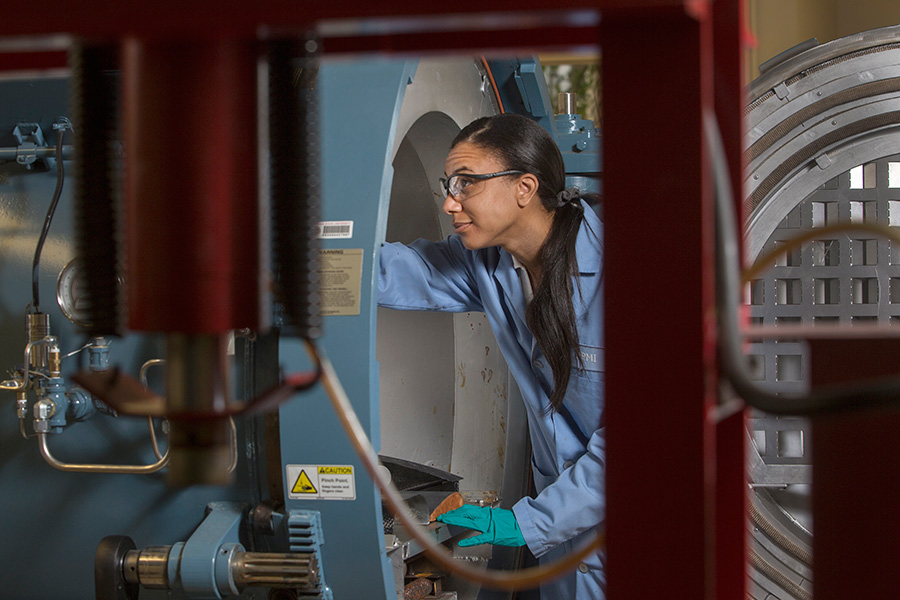
It’s stronger than steel, yet only a fraction of its weight, and has a size 10,000 times smaller than the width of a human hair. It is a carbon nanotube.
For more than a decade, researchers at the Florida State University High-Performance Materials Institute have been laying the groundwork for a number of prototypes involving carbon nanotubes, a key entity in the future of materials engineering.
FSU created the institute in 2006 with a mission to recruit and retain top quality faculty and staff who will place HPMI at the forefront in the field of advanced composite materials and nanomaterials.
“HPMI is a great asset to FSU, and there is a lot of exciting work going on at the institute,” said Vice President for Research Gary K. Ostrander. “They are working on everything from next-generation materials for prosthetics to materials for aerospace to new and improved LED technology. We are very proud of the work they have achieved thus far and look forward to even greater accomplishments in the future.”
HPMI is located in FSU’s $20 million, 45,000-square-foot Materials Research Building in Innovation Park next to the FAMU-FSU College of Engineering, where it houses the latest state-of-the-art facilities and laboratories in materials research.
The ground-floor laboratory looks more like a modern manufacturing factory, and includes 3D printers, multiple hot-press machines and furnaces reaching temperatures up to 1,400 degrees Celsius.
“HPMI is a great resource to the College of Engineering. Our leading materials faculty are pushing the state-of-the-art for manufacturing of nanomaterials, and many of our graduate and undergraduate students are receiving a cutting-edge materials education,” said FAMU-FSU College of Engineering Dean Murray Gibson. “I am particularly excited by the range of research from basic to applied engineering, and the multiplicity of research sponsors from government to industry.”
Some of HPMI’s innovative technologies include fabrication of buckypaper, stretching alignment of nanotubes and production of nanocomposites.
Buckypaper, a nanotube-based substance, is one of HPMI’s most promising prototypes. Though it doesn’t look much different from a regular sheet of carbon paper, it exhibits remarkable properties of strength and conductivity. Although still in the prototypical stage, when the ultrathin buckypaper is used in composites, the nanotubes are poised to transform the aerospace, defense, energy, infrastructure and transportation industries.
HPMI researchers are focused on scaling up their productive prototypes so that buckypaper can be mass produced and affordable in the future. Planes, trains and automobiles could one day be composed of this new material, which would revolutionize manufacturing as well as passengers’ experiences. Scientists estimate that if commercial and military planes were engineered with buckypaper instead of metal, they would be up to 10 times lighter, safer and more effective.
“When we explore the development of the buckypaper manufacturing process, we also keep the scalability as the ultimate goal to meet quality, quantity and affordability for potential industrial applications,” said HPMI Director Richard Liang. “We also provide continuous samples to support many industrial and government efforts for using carbon nanotubes for new product prototypes.”
Another HPMI invention that has made headlines is auxetic foam, which was developed by Chad Zeng, an associate professor at the FAMU-FSU College of Engineering. What makes this foam unique is that it gets thicker when it is stretched, unlike ordinary foam that would become thinner. Zeng and his team have reworked the properties of regular foam to apply it to prosthetics.
They’re also looking at applications for sports equipment.
Zeng’s high-performing auxetic foam made its way into the marketplace through a license agreement with Auxadyne LLC, a polyurethane foam technology company located in Keystone Heights, Fla. Additional HPMI partners include nonprofits, government, private corporations and the military.

HPMI and the FAMU-FSU College of Engineering have recently kicked off a project with NASA focused on developing material entities to be used in space travel. The project is a part of a five-year plan by NASA to establish the first-ever Space Technology Research Institutes (STRI), which includes one on bioengineering and one on materials synthesis.
Liang was named the materials synthesis team leader and deputy director for the multiuniversity project.
“We are very excited to be working and collaborating with NASA for its future work,” Liang said.
The partnerships have been a boon for faculty and students alike.
“A key element of HPMI’s success has been the quality of the students it attracts both at the graduate and undergraduate level,” Liang said.
HPMI welcomes FSU undergraduates interested in conducting materials research and offers a wide variety of projects for students to engage in. There are currently 60 student researchers at the institute, 16 of which are undergraduates.
HPMI’s students have gone on to work at companies like Boeing, Lockheed Martin, Northrop Grumman, Raytheon, General Electric and Apple.
“We are very proud of our students and take pride in providing them with great professional experience before they enter into industry jobs or undergo admission to graduate school,” said HPMI Director of Operations Frank Allen.
For more on HPMI, visit its website.




